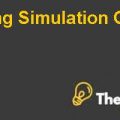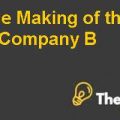HOME EQUITY LOAN Case Solution
Default Value & Loan Amount
ANOVA METHOD:
Ho: number of people have defaulted on their loan amount
H1: number of people have not defaulted on their loan amount.
As our F-test value is too large. This means that the variability between the means is high. We will reject our Ho which means that most of the people have not defaulted on their loan amount. R-sq. value of 0.05% tells us that there is not relationship between the default value and the loan amount.
Default Value & Property Value
ANOVA METHOD:
Ho: There is a relationship between defaulted value and property value.
H1: There is no relationship between defaulted value and property value.
The P-value is less than 0.05 which is insignificant. The F-value 5.25 which shows that Ho is not rejected. There is a relationship between defaulted value and property value.
The UNIVARIATE Procedure:
Positive kurtosis which is leptokurtic, tell us that there is a lot of data in the tail. It tells us that data has been heavily tailed. The data is positively skewed at 2.03. This means that the data in right tail of the distribution is longer than the left. The range is of $88,800 between minimum and maximum value. This is very high as compared to mean that is $18,607.
Fitted Normal Distribution for Loan
This test analyzes the goodness of fit.
Ho: Model is not a good fit.
H1: Model is a good fit.
The p-value of KS test is 0.01 which less than 0.05, shows that model is significant. This also tell us that model is a good fit as Ho is rejected. The P value of Cramer-von Misses and Anderson-Darling is 0.005 each, which is again lower than 0.05. This tell us that model is significant and it accepts the Ho which tells us that the model is a good fit.
YEARS AT CURRENT JOB
The UNIVARIATE Procedure:
The 8.9 years mean tells us that the average years on current job is 8.9 years. The skewers of 0.98 tells us that the data is normally distributed. The data is platykurtick means that the data is right tailed or heavily tailed towards the right. The range is 41 which is quite higher than the mean. This shows that maximum value is farther away from mean. When we analyze this data from graphical point of view, we can see that the data has longer tails towards left.
GOODNESS OF FIT:
Ho: The model is not good fit
H1: the model is a good fit
The p-value for KS test 0.01 which is lower than 0.05, it tells us that the data is significant and it reject our null hypothesis. This also means that the Model is a good fit.
DEBT TO INCOME RATIO
The debt to income ratio has the mean of 33.07% this means that for 1$ income people have 33cents of debt, which is very low. The data is platykurtic and is positively skewed. This means that it has heavier tail towards left. The graphical diagram shows us that the data has high symmetry. The highest debt to income ratio is of 35% to 45% people.
Fitted model:
Ho: The model is a good fit
H1: The model is not a good fit
The p- value of KS test 0.01 which is less than 0.05 our model is significant and Ho is rejected hence our model is a good fit...........
This is just a sample partical work. Please place the order on the website to get your own originally done case solution.












